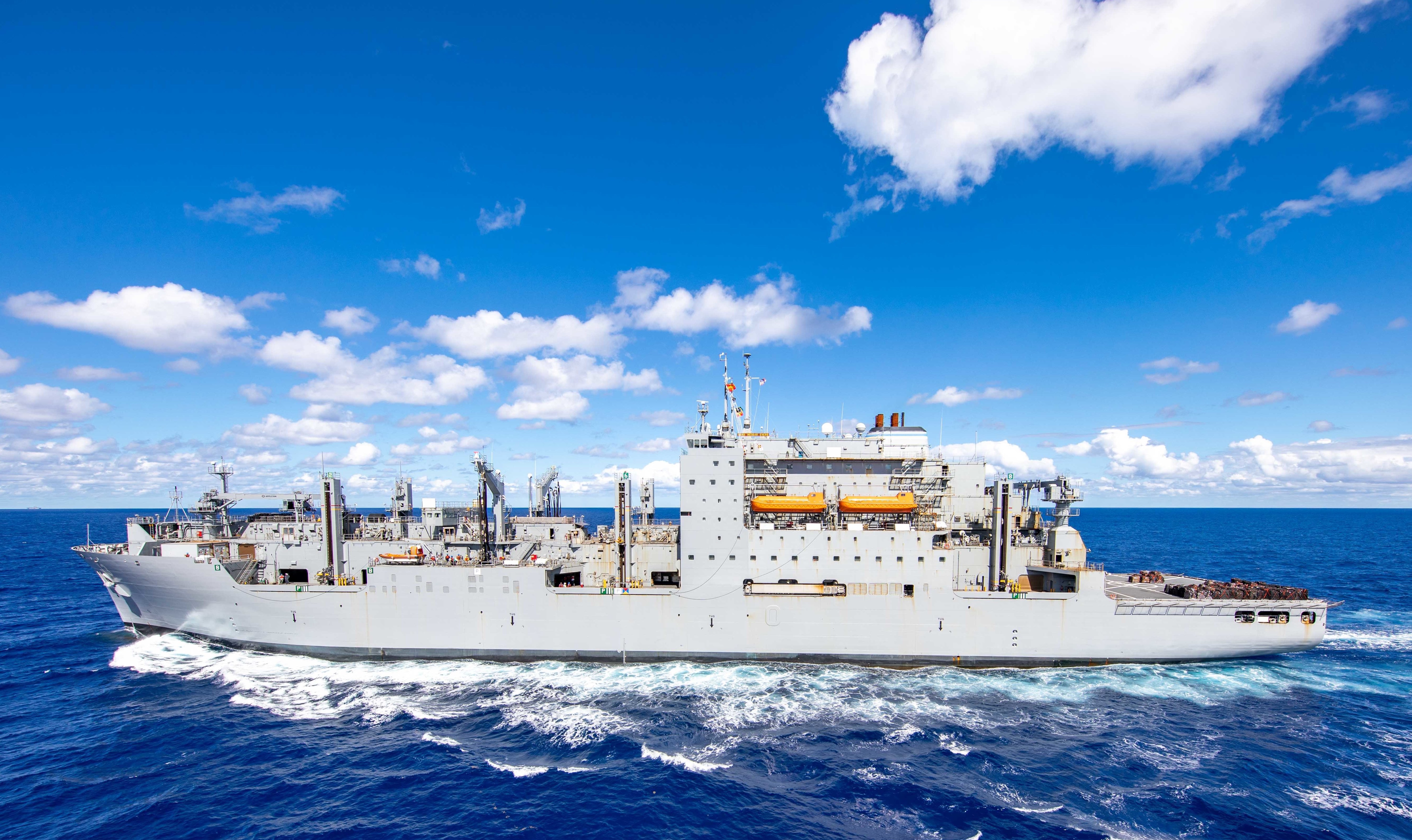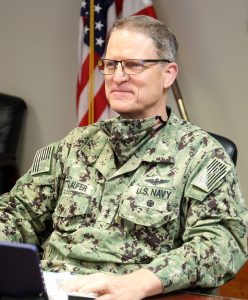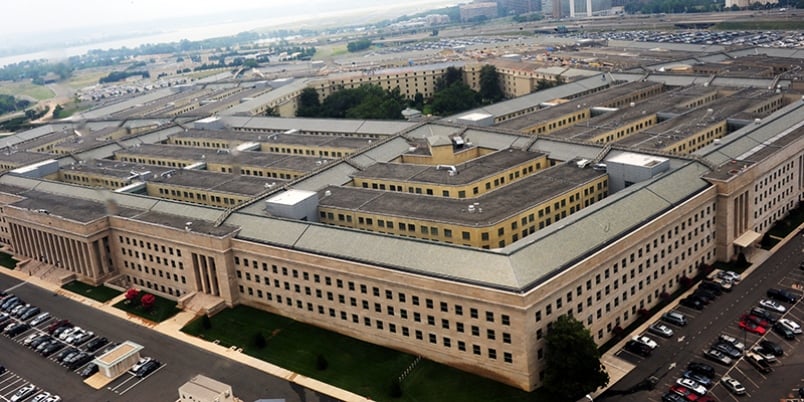
ARLINGTON, Va. – The American defense maritime industrial base has atrophied to a point where the United States builds less than 1 percent of the world’s ocean-going fleets and has less than 4 percent of the world’s licensed mariners while China establishes itself as a maritime nation, Military Sealift Command’s top officer said Tuesday.
Chinese President Xi Jinping challenged the West in his remarks on Beijing’s global ambitions at the recent Chinese Communist Party congress, Rear Adm, Michael Wettlaufer said, speaking at the Navy League.
Xi warned Taiwan and its supporters, including the United States, that China has the ability to take any necessary measures to bring the self-governing democracy under its control, Wettlaufer said.
That translates directly into a “contested environment” with China if the U.S. provides support to Taiwan in a conflict, Wettlaufer said.

The command is well aware of the multi-domain challenges a contested environment presents sealift in the Indo-Pacific and Europe when 85 percent of American forces are based in the United States, he said.
“A single submarine will cause us problems … if we don’t know where it is,” he said.
Wettlaufer said the entire U.S. defense maritime “ecosystem is under stress” from shipbuilding to recruiting and retaining mariners, to shipyards and ports.
“I think we’re ignoring the problem,” he said.
He also pointed to the aging fleet of ships in his command, the Maritime Administration and the declining number of American-flagged commercial vessels.
He pointed to SS Gem State (T-ACS 2), a 65-year-old crane ship as an example of age. The “systems on this ship are [for] steamships” and they require specific skills to operate, which a dwindling force of mariners have. It also presents maintenance challenges because steam is no longer ocean-going vessels’ main propulsion system.
Wettlaufer said he expects Cape Arundel and Cape Cortes to be added to the Ready Reserve Force next year when modification work to bring the used roll-on/roll-off cargo vessels is complete. Both were in the American roll-on/roll-off Carrier program and are being transferred from Defense Department control to MARAD in the Department of Transportation.
“They need that modification to be militarily useful,” he said.
Wettlaufer praised the investments being made in building the National Security Multi-Mission Vessels for the five state-run maritime academies. The first Empire State VI, being built for New York’s SUNY Maritime Academy, was launched in Philadelphia in September with delivery expected next year. In addition to being able to provide up-to-date training needed for future licensed mariners, the ships can also be used to support humanitarian and disaster relief operations.
“I’m looking for a place to put [contested environment] training in those schools” that it already employs for civilian mariners, he said. Wettlaufer also called for a re-examination of the waivers given to graduates of the federal Merchant Marine Academy and the state academies from obligated service.
“It’s a three-legged stool … ships, cargo and mariners,” he said.
To remain viable, those three things need to be driven by other activity, such as subsidies for U.S.-flagged ships engaged in international trade and the need to adjust that to meet the rise in inflation.





